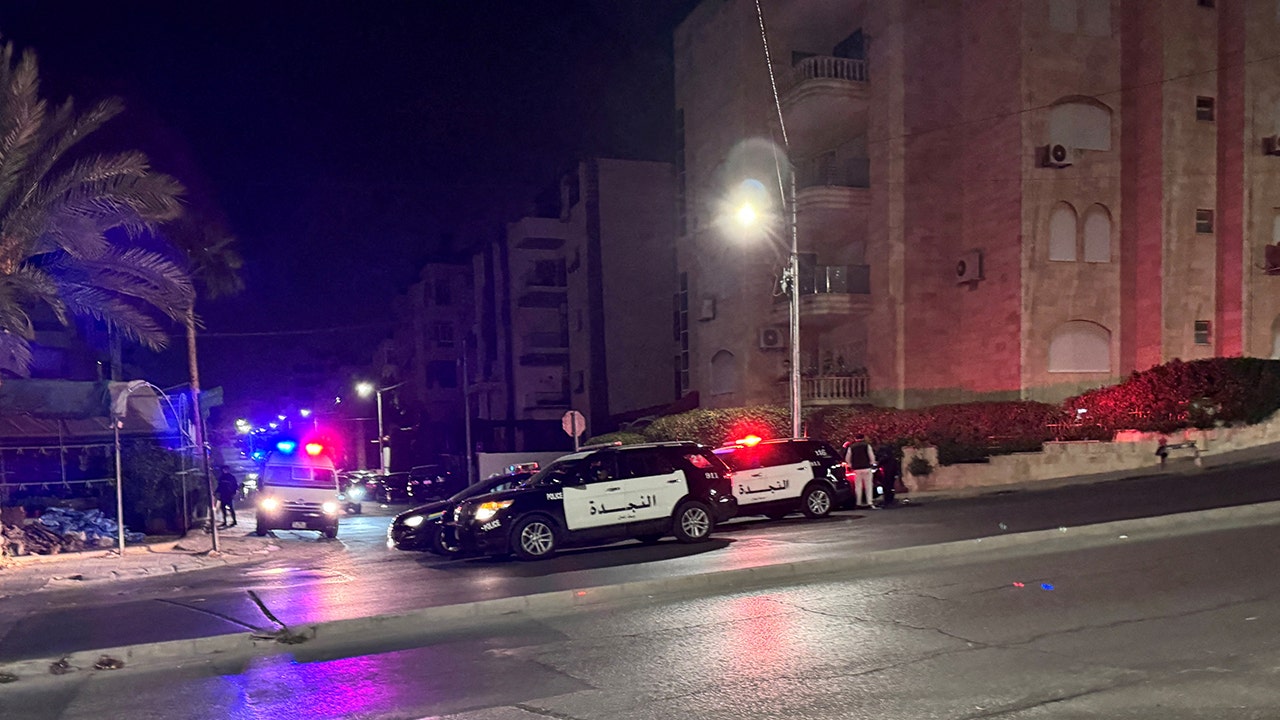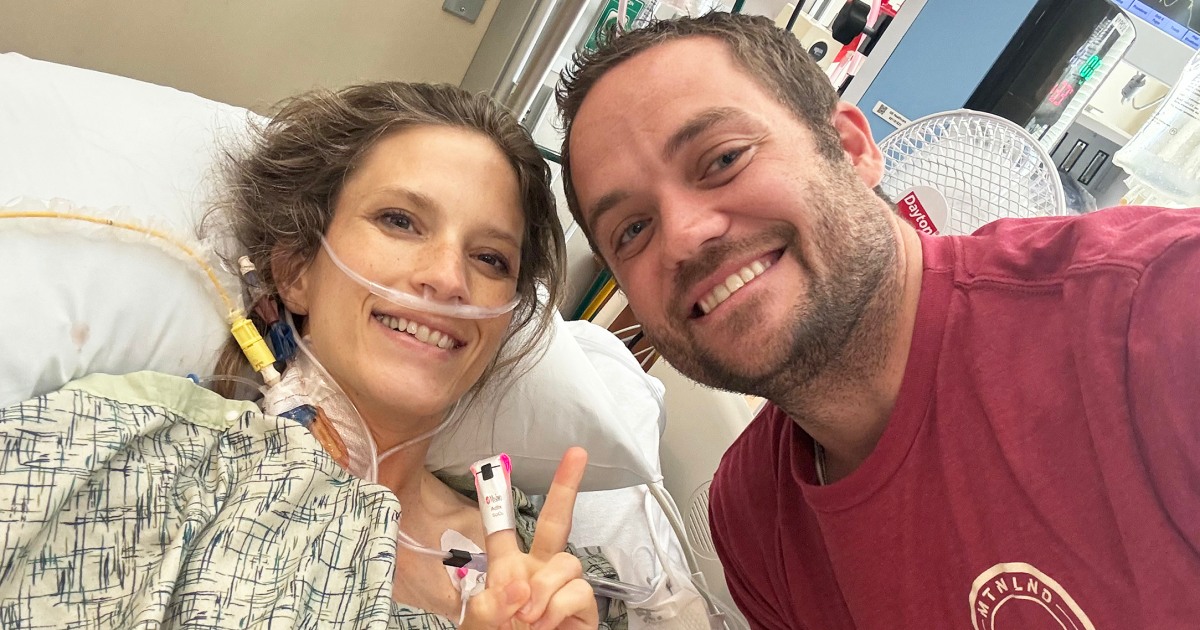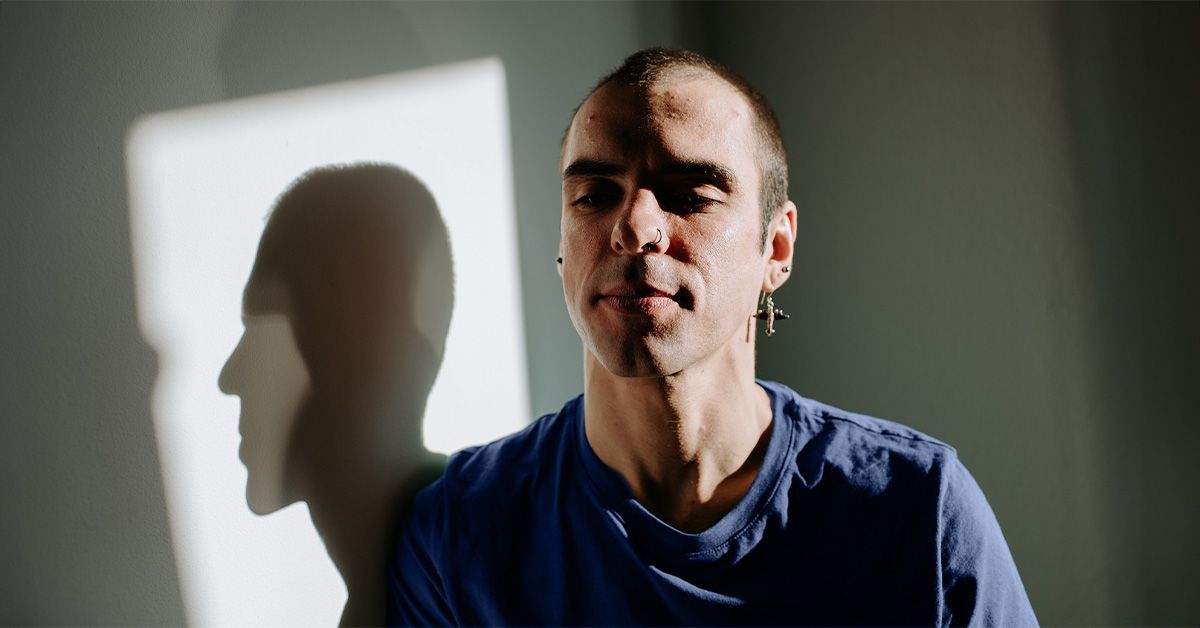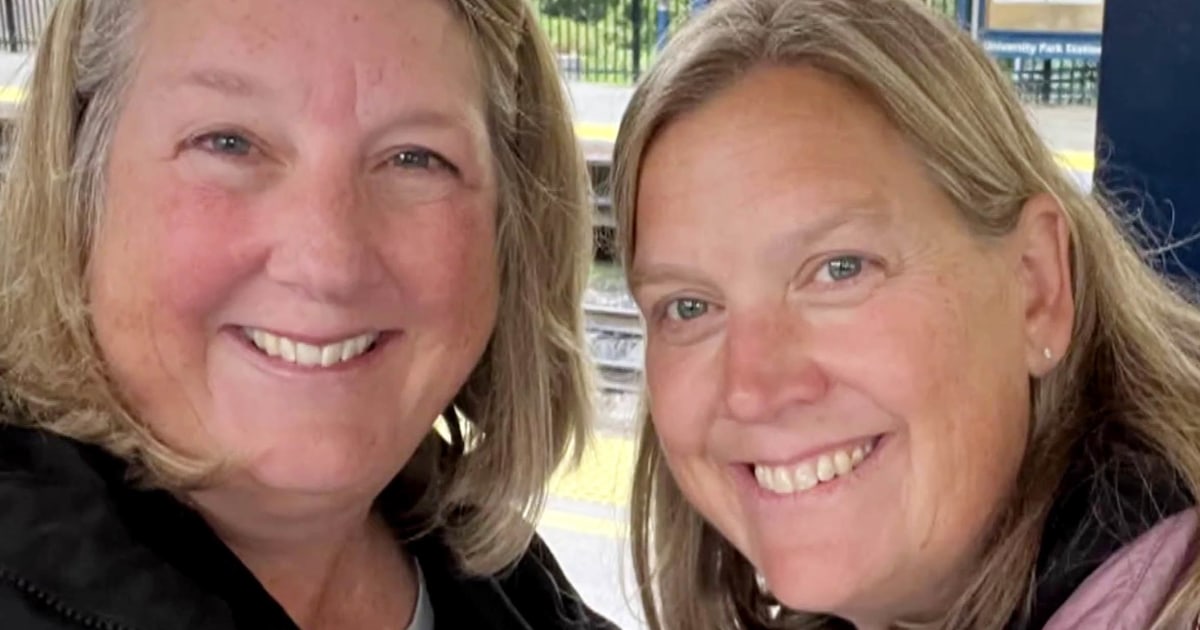In early May, Justine Carter, 33, woke up feeling “tired and blah.” She hopped on her treadmill hoping that some cardio would boost her mood. But soon, Carter felt ill.
“I started to feel very nauseated,” the mom from Santaquin, Utah, tells TODAY.com. “I laid on the floor.”
As she felt sicker, she rushed upstairs to the bathroom and began vomiting violently. Then she called her husband, Kevin Carter, who put his mom, Teresa Carter, a nurse, on the phone too. Justine Carter lost consciousness at some point, so her 4-year-old son Tucker jumped on the call. Tucker told the adults his mom fell asleep.
“I said, ‘Tucker, I need you to wake your mama up,’” Teresa Carter tells TODAY.com. “Tucker came back on the phone and said, ‘She’s sleeping.’”
Justine Carter later learned she had a heart attack because of a spontaneous coronary artery dissection (SCAD), when a tear develops in the layers of an artery. It’s considered an emergency because it can prevent blood flow to the heart. Justine Carter likely survived because her mother-in-law hurried over to provide CPR.
“It’s a miracle I’m here today,” Justine Carter says.
‘Maybe if I get on my treadmill I will feel better’
On May 3, Justine Carter woke feeling rundown. But Utah gets long winters and she believed the overcast, cold day impacted her mood. She and her sister had been working out on their treadmills at the same time and connecting on the app Marco Polo to keep each other accountable. So, when her sister started her workout, Justine Carter decided to exercise, too.
“I was like, ‘Maybe if I get on my treadmill, I will feel better,’ because I just felt blah,” she says. “I didn’t feel good. I didn’t necessarily feel sick.” But after only a few minutes of warming up, Justine Carter felt extremely nauseated and worried she had a stomach bug. She continued talking to her sister, noting that how sick she felt. She lay on the floor and quipped to her sister, “I’m not dead yet, but I feel like it.”
Soon, the urge to vomit became overwhelming, and she raced up the stairs to the bathroom.
“I was throwing up so violently I thought I had the worst stomach flu of my life,” she says. “I called my husband and told him I thought I had the stomach flu and I needed him to come home.”
From here, Justin Carter’s memories are fuzzy. But Kevin Carter had added his mom, Teresa Carter, to the call with Justine Carter and she remembers what happened.
“He thought I should come out with him and check on her,” Teresa Carter says. “He wondered if her blood sugar was low.”
But Teresa Carter worried that her daughter-in-law had a more serious health problem. Justine Carter used “garbled” speech before being unable to respond at all on the call. That’s when her son Tucker checked on his mom and thought she was napping.
“I could hear him saying, ‘Mama. Mama,’” Teresa Carter recalls.
When Teresa Carter arrived at the house, it appeared that Justine Carter was having a seizure.
“She wasn’t breathing effectively,” Teresa Carter says. “She did have a pulse and then I gave her two rescue breaths.”
But when Teresa Carter checked her pulse again, she couldn’t find it.
“Her color was very poor,” Teresa Carter says. “I started CPR and (Kevin Carter) called 911.”
Within five minutes, the ambulance arrived, and they took over. They used an automated external defibrillator (AED) to check Justine Carter’s heart rhythm. It indicated that she needed a shock to her heart, which they administered several times. This stabilized her, and she was taken to the local emergency room at HCA Healthcare’s Mountain View Hospital in Payson, Utah. Doctors performed an EKG and soon realized why Justine Carter was so ill.
“She was having a heart attack,” Teresa Carter says. “We didn’t know what her outcome would be.”
Doctors realized she experienced SCAD, when the walls of the coronary artery suddenly tear open, according to the American Heart Association. Blood can become trapped in the deepest layer and balloon up, blocking the artery and potentially leading to a heart attack.
Doctors needed to figure out how to best treat Justine Carter.
“They kept her in an induced coma for a few days,” Teresa Carter says. “When you’re in that coma’s induced state, your body requirement for oxygen is at its lowest so it was just a good time for her to allow her heart muscle to heal.”
But the family grappled with other concerns. They worried Justine Carter experienced some brain damage.
About three days later, doctors weaned Justine Carter off the sedation. Teresa Carter felt hopeful when doctors asked her daughter-in-law her name and what day it was, and she answered mostly correctly.
“They were great indicators to us that neurologically, she was going to recover,” Teresa Carter says. “We all saw it as a big relief.”
When doctors explained to Justine Carter that she had a heart attack, she felt confused.
“Everything I had heard about young people having heart attacks was because they drink energy drinks. And I remember telling Kevin, ‘I don’t drink energy drinks. Why is this happening to me?’” she says.
“I quickly realized it was a miracle that I was here, and I could remember things because people had told me, ‘You were supposed to be dead.’”
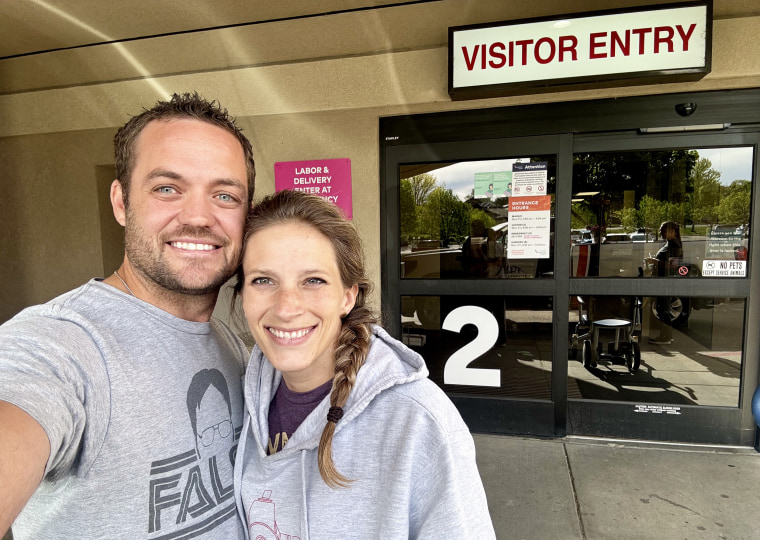
Doctors tried to undercover an underlying reason for Justine Carter’s SCAD, but they didn’t find anything.
“Spontaneous is in the name (SCAD),” Justine Carter says. “There’s not really a way to prevent it from happening.”
After about a week in the hospital, Justine Carter was discharged. But the trip home was brief.
“The very next morning, I actually had another heart attack,” she says. “I started to feel the tightness in my chest, the jaw pain, the classic heart attack symptoms that you hear of, the pain in the left arm. And then I got violently nauseated again and started to throw up.”
Kevin Carter rushed her to the hospital again on May 10.
“I remember doctors being in a panicked state because my blood pressure was dropping,” she says.
Justine Carter was airlifted to HCA Healthcare’s Timpanogos Regional Hospital in Orem, Utah, to undergo an open-heart procedure.
When she arrived, her blood pressure remained so low that doctors couldn’t sedate her. Eventually, they implanted a temporary Impella heart pump, which they inserted by threading a catheter through her femoral artery and sending it to her heart.
“It’s a little machine that pumps your heart for you,” she says. “I had to have it in for three days, and during those three days, I wasn’t able to move.”
While it felt tough to rest at a 30-degree angle and not move for so long, Justine Carter feels impressed by what doctors did to help her.
“The modern medical world is so crazy that I feel very blessed that I even had the opportunity to have that help my heart,” she says.
SCAD
SCAD occurs randomly, and experts are still unsure why it happens, the American Heart Association notes. More commonly, it affects seemingly healthy women without heart disease.
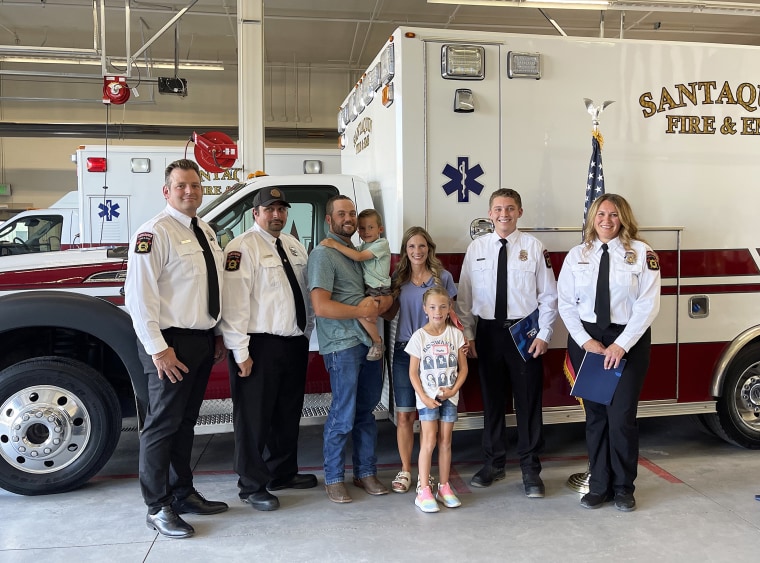
According to past TODAY.com reporting, people at greatest risk of SCAD include:
- Women between 30 and 50 who are healthy
- People in the immediate postpartum period
- People with connective tissue disorders, such as Marfan syndrome or Ehlers-Danlos
The American Heart Association notes that high numbers of people with SCAD also have fibromuscular dysplasia, a condition where some blood vessels become fibrous and prone to dissection, Johns Hopkins Medicine says.
SCAD can cause heart attacks. It’s important to know the signs of heart attack:
- Chest pain
- Trouble breathing
- Sweating
- Dizziness
- Pain radiating up the left arm
- Chest pressure
- Nausea
- Stomach upset
‘Listen to your body’
The second heart attack “was just a continuation of that first dissection,” Teresa Carter says. But having the heart pump allowed Justine Carter’s heart time to recover.
“(It) assists the heart in its pumping function, so the heart doesn’t have to do all that work, and it allows that area that’s been without oxygen to heal and recover,” Teresa Carter explains. “It was awesome they were able to do that.”
After returning from the hospital a second time, Justine Carter felt “very tired.”
“For a good while, I felt like I had to have at least a good long nap in the middle of the day,” she says. “For the first two weeks, I wasn’t supposed to be alone.”
Family stayed to help Justine Carter care for her kids and make sure nothing else happened to her.
“It was really nice because I couldn’t drive so they did take me out of the house,” she says. “I was really tired for that first little while and just so grateful for everything the more that I came out of my … daze.”
Justine Carter knows how lucky she is that Teresa Carter knew CPR.
“My heart is full of so much gratitude for such a horrible time,” she says. “I don’t have brain damage because CPR was done so quickly for me. I think it is so important for people to learn CPR.”
Two weeks after returning home, Justine Carter began cardiac rehabilitation.
“It helped me mentally and physically to be able to know what my body can handle and what I can do,” she says. “I meet with my cardiologist regularly.”
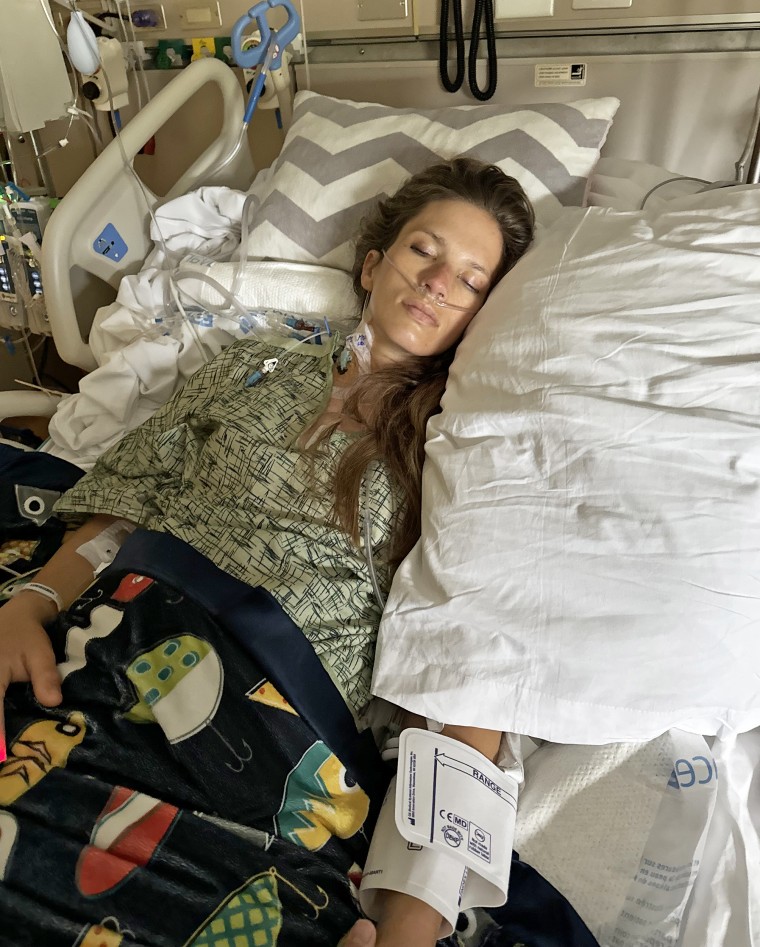
She takes some medications and can no longer participate in high intensity cardio activities, though she has enjoyed walking. There’s a lesson that Justine Carter hopes others take from her experience.
“Listen to your body, because I will always wonder, ‘If I listened to my body and knew something was wrong, would I have done something different?’” she says. “It’s really hard for women because sometimes we’re dismissed. And so that’s when you really have to step in and just say, ‘I’m in charge of my body. I know something’s wrong, so I’m going to find someone to listen.’”
Read the full article here






